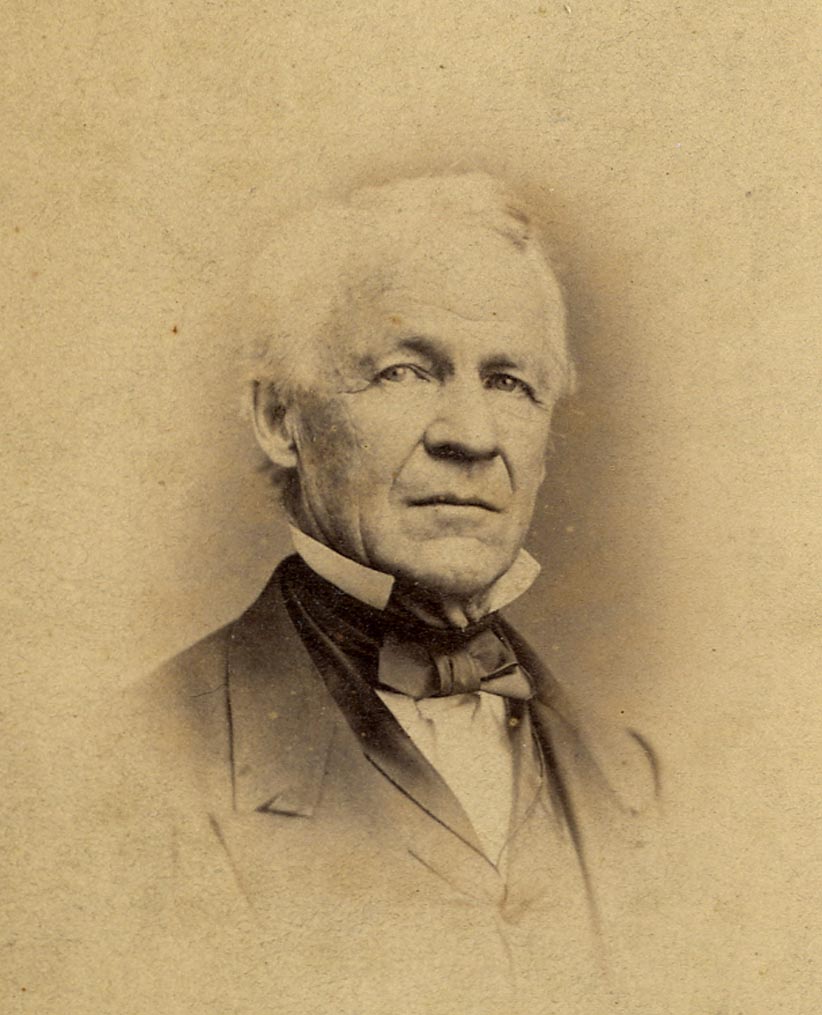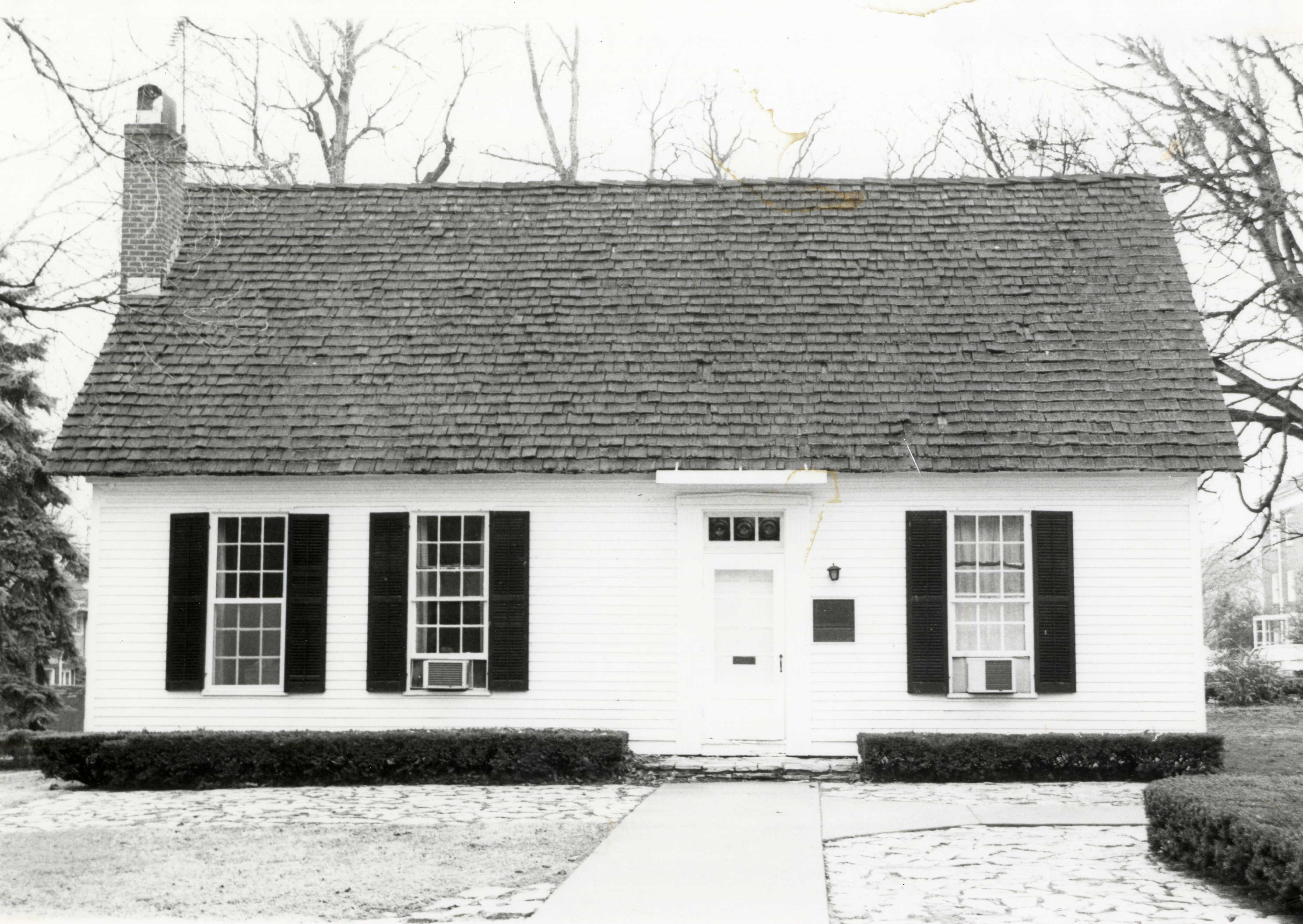Buildings we go in every day on campus started as private family residences. Wabash’s campus is dotted with these homes. Each carries memories and histories of the families that grew up within them. Caleb Mills House, Hovey Cottage, Kane House, Hays Alumni Center, the International Office, Arnold House, Ginny Hays House, and the Stephenson Institute were all once private homes filled with the love and laughter of their families.
 Many pass by Hovey Cottage on a regular basis without thinking of the significance it holds to Wabash College. Today it is the Office of Marketing and Communications and home of Wabash Magazine.
Many pass by Hovey Cottage on a regular basis without thinking of the significance it holds to Wabash College. Today it is the Office of Marketing and Communications and home of Wabash Magazine.
Hovey Cottage was built by Edmund O. and Mary Carter Hovey between 1836 and 1837. In a letter to his brother Israel Dewey on December 6, 1837, Edmund described his new home in great detail.
“We have now been in our house about four weeks. It is a one-story house, 40 feet by 20, with a kitchen… It lies about ¼ mile from the village, and perhaps 50 rods from the site of the college. It is a high and I hope healthy location, commanding pleasant view of town and of the college grounds… The college campus on the east beyond the village. On the south is Prof. Mills’ house at the distance of 13 rods.”
The Hovey Cottage still sits on this original plot of land, though it has been moved a little to the south of its original location. A rock now sits where it once stood. The Hovey family only had funds at the time to furnish two of the rooms of their new home, and it would not be completely furnished until 1840 with the assistance of Mr. and Mrs. Israel Williams, who rented and finished the extra rooms. When the Hoveys moved into their new home, they brought their young son Horace C. Hovey, who would be joined by his sister Mary Freeman Hovey in 1838. This modest home would be filled with the passions of its owners and grow not only with the family that called it home but with the College itself.
The Hovey home was always bursting with people coming and going through its doors. In a manuscript written by Nora Hopkins, she noted that every place in the house and at the table was kept full. The Hoveys not only lived in the home but also boarded students and travelers to the College. Some of the first student boarders were Thomas S. Milligan [W1839] and Samuel S. Steele [W1839]. The Hovey home also became the foundation of the Wabash College band, which was formed with the assistance of Edmund Hovey in 1841. The first instruments for the band were purchased by Hovey in New York and shipped back to the College with other dry goods. The instruments were stored in the attic of the Hovey Cottage during vacations and breaks. During this time, Horace Hovey would venture to the attic and try out all the instruments, igniting a passion for music he would possess his entire life.
Mary Carter Hovey was a passionate gardener, and her home was surrounded by different plants and gardens, beautifying the Hovey home and Wabash College. She writes in a letter to her sister on May 4, 1846.
“I assure you a change has passed over us and though we have no snow we have tons of snow-balls, and lilacs and roses, our tulip is now in bloom. If you find any one that has tulip bulbs to give away or to sell pray bring me up some when you come. It is just four weeks since we had our first pie-plant pie, and we have had them quite often since. We have had plenty of asparagus and our currants are almost fit to use.”

Hovey Cottage, at its core, was the home of Edmund, Mary, Horace, and Mary Freeman Hovey. The two children grew surrounded by the love and admiration of their parents and the College community that surrounded them. Horace graduated from Wabash in 1853 and followed his father into the priesthood, attending Lane Theological Seminary. He also carried on his parents’ passion for nature, documenting and exploring many of the cave systems of Indiana and the United States. Mary Freeman followed her father into education, becoming the first documented female instructor at the College at the close of the Civil War. She would go on to teach at Kansas State Agricultural College, now Kansas State University. After teaching for a few years, she returned to Crawfordsville to be with her parents. While caring for her aging parents, she continued to teach by tutoring the children of many of the faculty and staff.
Hovey Cottage may appear to be a modest and straightforward building, but it is one with a complex story that is integral to the founding and success of Wabash. It has remained a constant on campus and will hopefully continue to be so for those that call Wabash home well into the future.
For more information about the Hoveys and the Robert T. Ramsay Jr. Archival Center collections, please visit https://library.wabash.edu/home/collections to view our digitized collections and online resources. Please also follow us on Instagram for weekly posts showcasing the history of Wabash College!